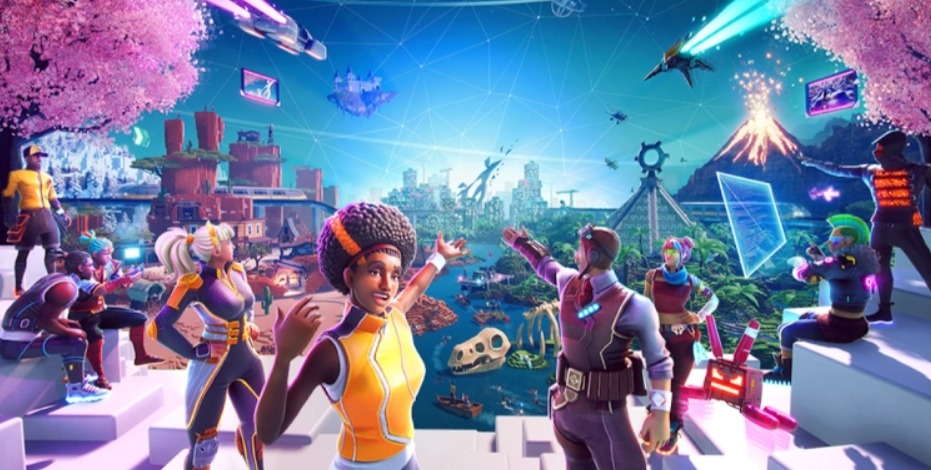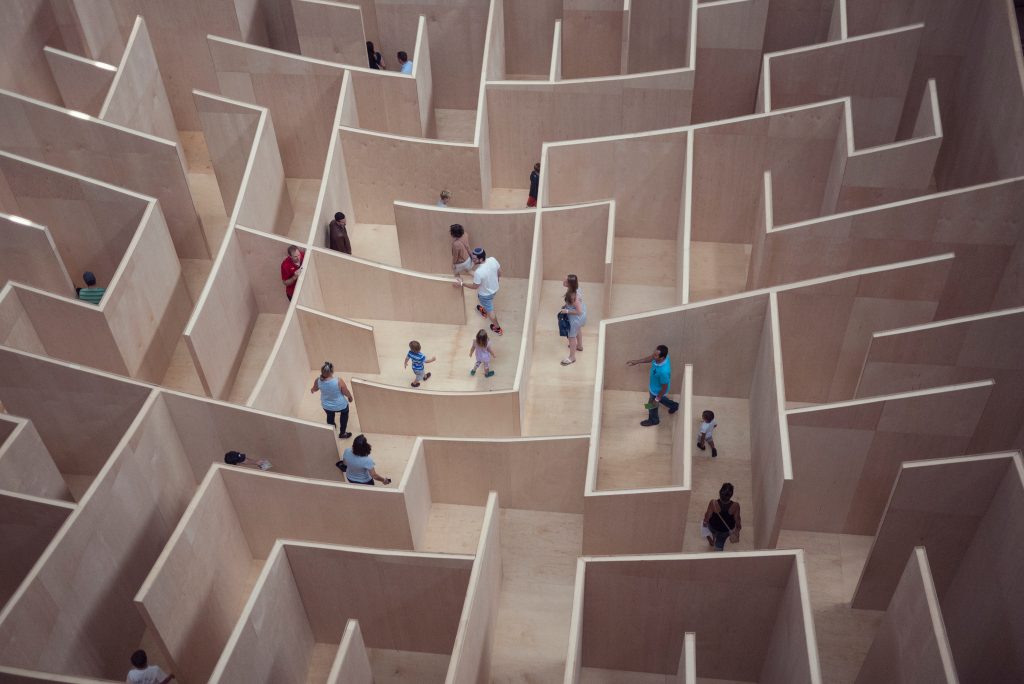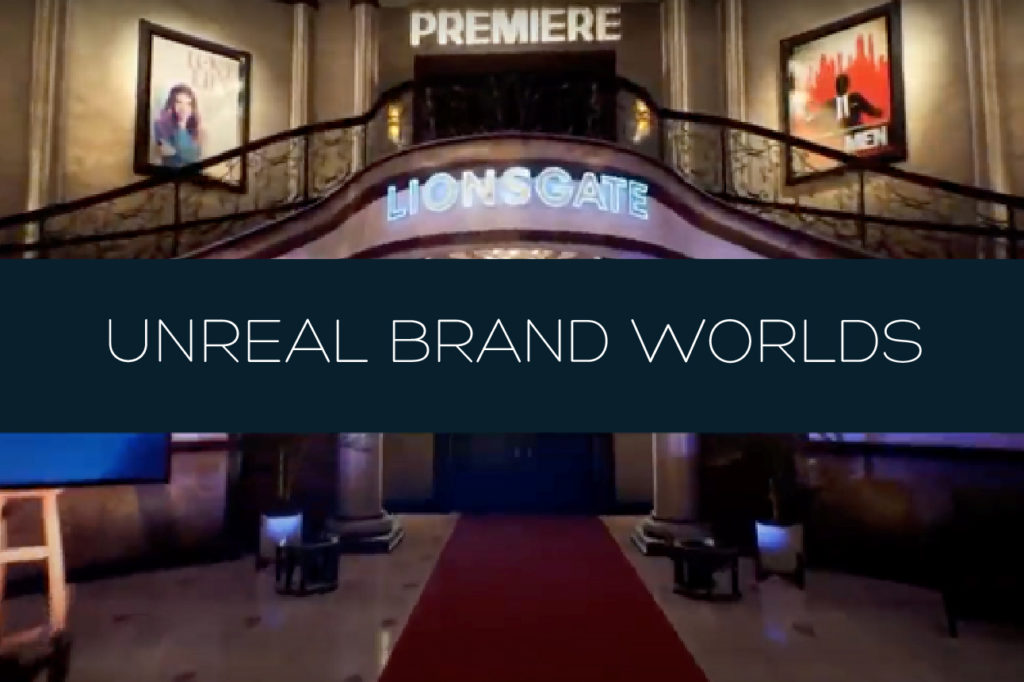Creativity in the Metaverse: Is Distributed Innovation Possible?

Distributed and hybrid working are here to stay. But will metaverse technologies make the reality of future work better or worse for workers and their employers? Nick Rosier, our content and digital director investigates.

The idea that creative teams can thrive online has long felt more like fantasy than reality. Most onboarding packs are crammed full of digital tools and platforms, but the sad truth is that most stifle creativity rather than unleash it.
Finance tools, time trackers, CRMs, Kanban boards – the digital landscape of businesses today is focused on productivity, efficiency and measurement. Where does culture come into play? Where are communities built? Microsoft Teams and intranets have their place, but can we do better?
Maybe creativity in the metaverse is the answer.
As spending on office rent goes down, how far can investment in the virtual world get us?
2022 will be the year that businesses invest in virtual as well as physical spaces for their teams.
The average cost of office space in London is over £500 per person per month. A 50-person office might cost over £300K per year in rent alone. What would it look like if businesses invested, say, half of that on virtual spaces to build culture and happiness?
The opposite of creativity is uniformity. Current trends in digital tools for teams have brought us to a flat (or Swiss) design singularity, with apps drawing from a narrow pool of design rules and constraints. We’re effectively building 1960s office cubicles for our online work lives: hyper-functional, but far removed from what makes us happy and creative.
Environment is fundamentally linked to creativity. Sparks of insight and seeds of ideas are borne from immersion in nature or new experiences and environments. Could we create a passive experience of simply going for a virtual walk in a forest, or flying across a mountain landscape, as a setting for standups, workshops or focus time? This type of virtual reality (VR) immersion increasingly has a presence in healthcare settings for patient convalescence and rehabilitation. Could it also help burnt-out teams and stressed individuals?
Platforms including Mozilla Hubs and Spatial have led the charge in developing collaborative virtual spaces. They have tested the waters with some success and have proved the use case. The tools used to create spaces on these platforms are still in their infancy and need more development to allow the quality and immersion of the 3D environments to come to life. To become an integral part of our work lives, they need integrations with apps from Adobe, Microsoft, Autodesk and other day-to-day tools of the trade.
Connected virtual spaces as a force for good in hybrid workplaces
Health and wellbeing have long had a foothold online with meditation on YouTube, mindfulness apps, learning material and mental health support. Relaxation is important for productivity. Without time to think, we’re running the hamster wheel of work and end up being ‘busy fools.’
Digital wellness facilities help teams to wind down or stay in a positive state of mind between activity at work. It’s important to destigmatize and see the value of empty spaces in our calendars and celebrate free time, rather than relentless back-to-back meetings.
The style and positioning of a virtual environment is a mirror of values and brand. Heavily themed spaces give new hires and prospects a strong sense of company culture from day one. We need to go beyond custom Zoom backgrounds to give our teams a sense of identity and shared purpose.
While visual environment is one important piece of the puzzle, we shouldn’t forget the power of sound. Music can form some of the strongest memories and associations. A track can bring back crystal clear memories or put us in a certain frame of mind. As a creative business, music is key to pitching ideas and creating strong emotional responses.
Music is a powerful part of experiences such as going to a sports game, watching a TV show or even turning on your computer. Repetition creates strong memories and associations. Designing music as part of a work-based metaverse could be used to trigger the best mental states for collaboration and innovation.
Accessibility and privacy
We need to think about democratizing access to these spaces. Creating experiences aimed at different senses helps to make spaces inclusive.
Beyond physical accessibility, the workplace metaverse needs to be relevant and accessible to non-digital natives, and avoid creating age or culture divides. Even more fundamentally, we need to consider hardware investments. While wearing a VR headset for eight hours a day might be a far-fetched ideal, we can at least look at monitors, headphones and even stereoscopic screens as a starting point.
Concerns around being over-tracked, over-connected and unable to switch off need to be addressed upfront. Here, perhaps, a privately-managed corporate metaverse has some benefits over a data-sales driven public metaverse such as Meta.
Hybrid working has so much potential, and we’re at the forefront of that innovation now. The technology is out there, and it’s up to businesses to take its potential seriously and invest. Natural selection will sort the gimmicks from the transformative experiences. Which do you think will survive?


